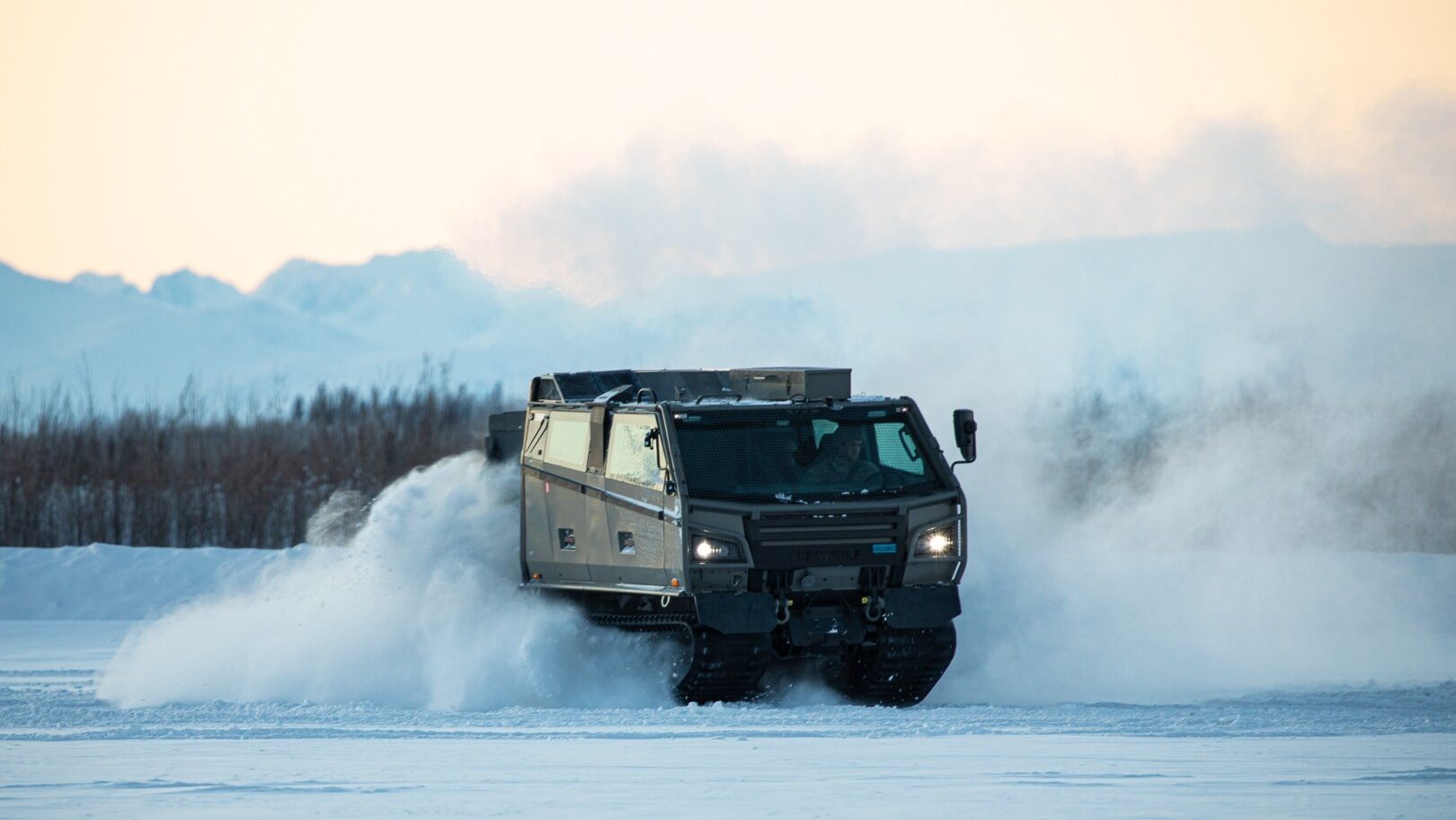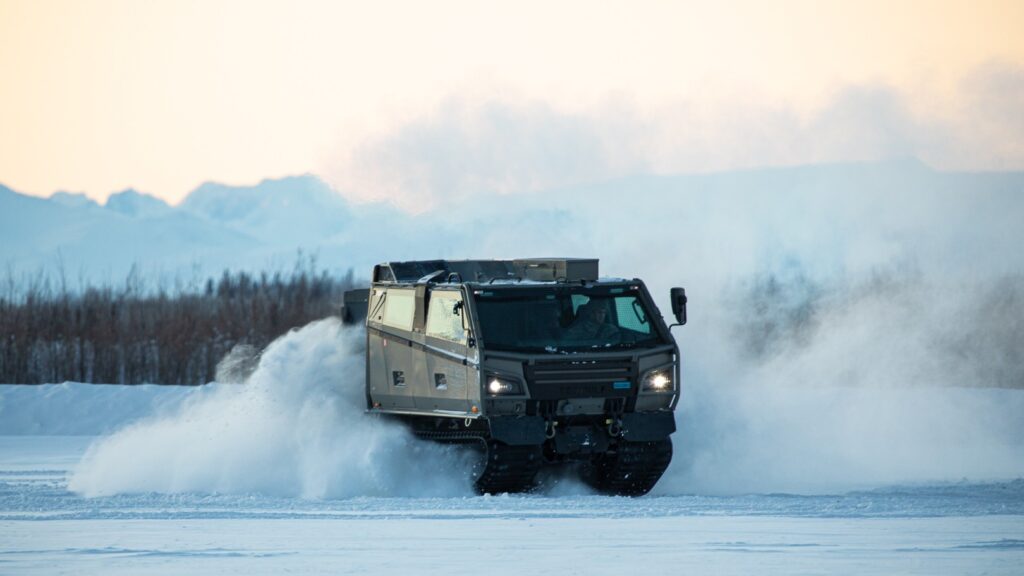
The branch has chosen the BAE Systems BvS10 Beowulf as its cold-weather all-terrain vehicle for 2023. (BAE Land and Armaments)
GVSETS 2024 – The looming challenges posed by China and Russia in the Arctic have raised questions about whether the U.S. Army’s ground fleet is prepared to operate in an extreme environment with difficult terrain, rapidly changing weather patterns, and temperatures as low as minus 60 degrees Fahrenheit.
In some areas, snow limits the movement of off-road vehicles, and the cold weather can freeze sensors, fuel, batteries and hydraulics. But in summer, the snow melts and soaks vast swamplands, which can slow the movement of entire platforms. To operate up there, Army officials here say, the Army must improve its mobility.
“If U.S. ground forces truly seek Arctic dominance, mobility improvements that enable them to outmaneuver the enemy and reliably sustain forces are critical,” Sally Shoop, former senior research engineer at the U.S. Army Corps of Engineers’ Engineer Research and Development Center (ERDC) – Cold Regions Research and Engineering Laboratory (CRREL), told the audience at the 16th annual Ground Vehicle Systems Engineering & Technology Symposium in Novi, Michigan.
Initially, the service undertook several research and development (R&D) and procurement programs related to operations under extreme conditions.
ERDC CRREL conducts several interdisciplinary problem-solving projects for the Army Corps of Engineers, including studies on the application of scientific and engineering knowledge to complex environments, materials, and processes in all seasons and climates.
Meanwhile, the Army Combat Capabilities Development Ground Vehicle Systems Center (DEVCOM GVSC) has been evaluating new processes and composite materials to reduce structural weight and improve the reliability of ground platforms in extreme temperatures from the Arctic to the desert.
“We may have a material from the supplier that advertises very good properties and is very suitable for simulation, but then I often get asked the question, ‘How will this perform in the Arctic?’ And often there is no material test data to demonstrate how a material might perform in those environments,” explained Robert Hart, a composites technical specialist at DEVCOM GVSC.
On the procurement side, in 2022, the Army awarded BAE Systems a $278 million production contract as part of the Cold Weather All-Terrain Vehicles (CATV) initiative to supply up to 110 BvS10 Beowulfs, spare parts and logistics support over five years. The first platforms were delivered in July 2023 and are expected to be used in support operations, emergency medical evacuations and general cargo transportation in addition to providing command and control functions, BAE Systems previously told Breaking Defense.
All of these efforts are designed to help the Army align with the Pentagon’s Arctic Strategy 2024. The document, released in July, outlined measures to improve the Pentagon’s cold weather inventory and enhance its C5ISR, early warning, tracking, sensing, forecasting and information sharing capabilities.
The strategy states that the Arctic is “vital to homeland defense” and “integral to the conduct of operations in the Indo-Pacific. Ground, air, and sea mobility platforms require specialized sustainment operations to function not only in extreme cold, but also despite other difficulties that have become characteristic of year-round conditions in the Arctic.”
The Arctic Strategy 2024 also states that growing cooperation between Russia and China “has the potential to change the stability and threat situation in the Arctic”.
In parallel with its cooperation with Beijing, Moscow revised its Arctic policy in 2023, stressing that the country’s interests in the region must be a priority. Since then, the Kremlin has been rebuilding its bases, renovating Soviet-era facilities and expanding its capabilities in the region, policymakers said.
China is now including the far north in its long-term planning and is seeking to expand its activities in the Arctic, even though it does not own any territory there.

